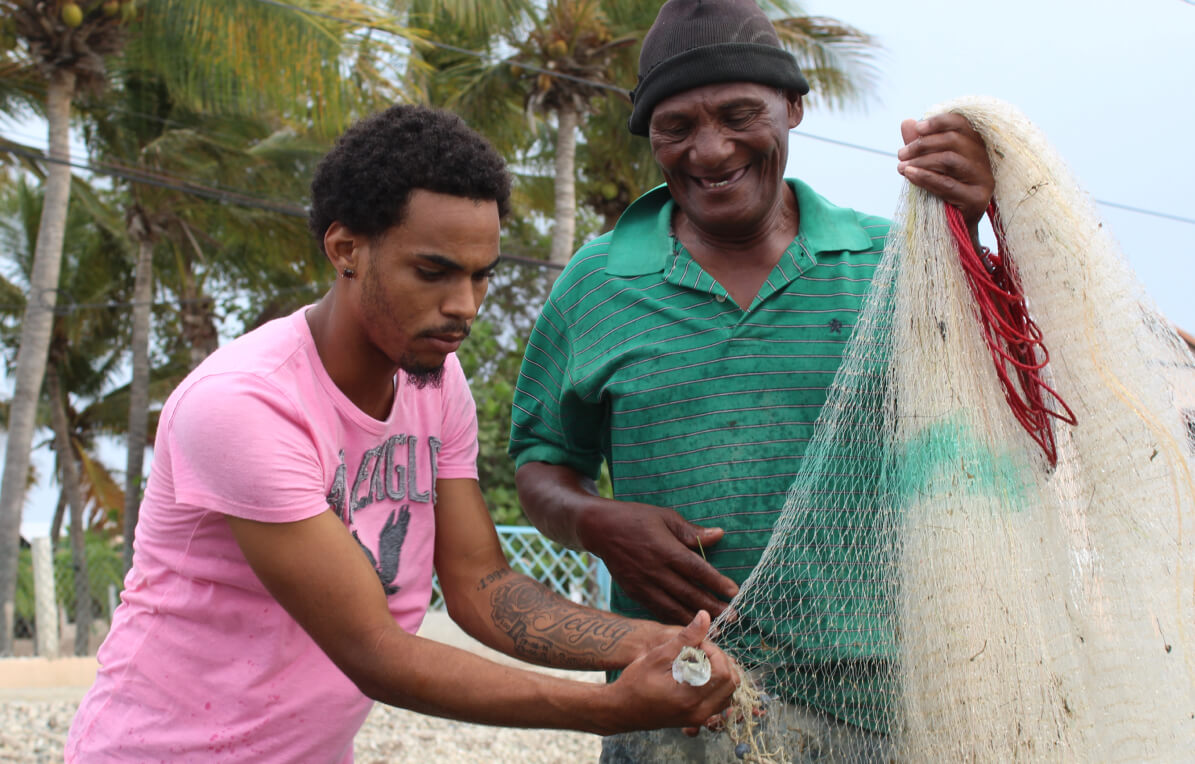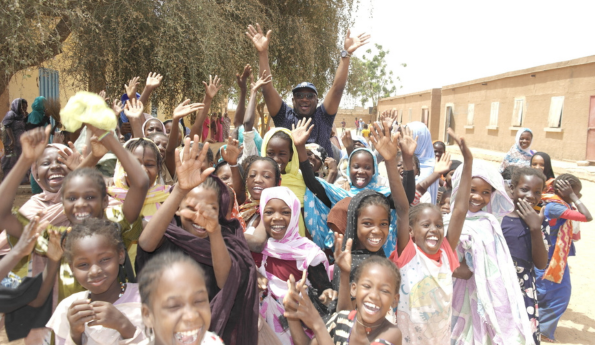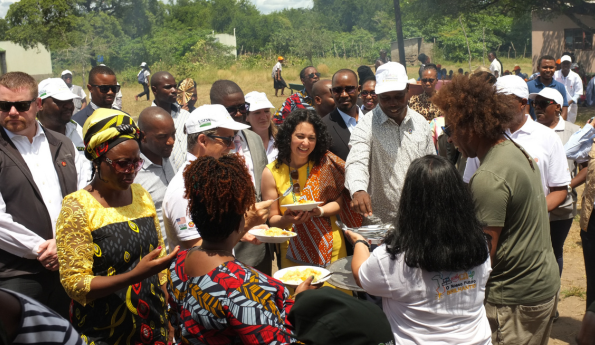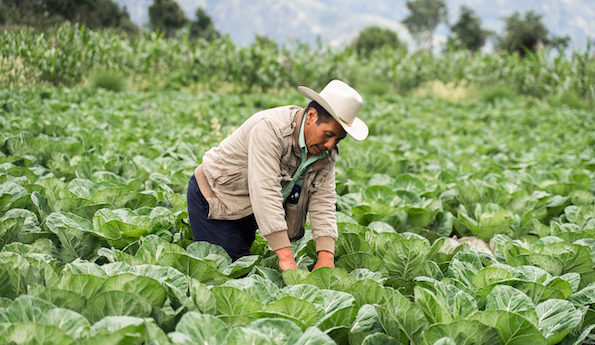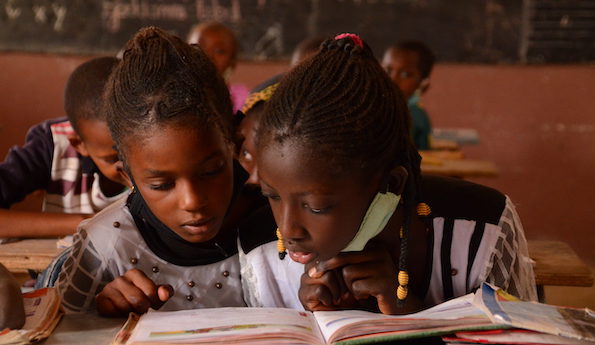Counterpart is a long-time implementer of USDA and USAID food aid programs, with current USDA-funded McGovern-Dole International Food for Education and Child Nutrition projects in Mauritania, Mozambique, and Senegal and Food for Progress in Guatemala. In April, we hosted the International Food Aid Showcase. Here’s what took place.
Experts and public officials once believed that the need for foreign food assistance was decreasing due to progress made in reducing global poverty and hunger. But the message from USAID and USDA officials at the International Food Aid Showcase on May 2 was clear: the demand for international food aid remains high.
Climate change and global conflicts are “sapping all of those gains we have made,” said Matthew Nims, deputy assistant to the administrator of USAID’s Bureau for Humanitarian Assistance. Nims emphasized the critical role of U.S. agricultural products in combatting food insecurity and humanitarian crises around the world.

Matthew Nims, deputy assistant to the administrator of USAID’s Bureau for Humanitarian Assistance, gave opening remarks at the International Food Aid Showcase on May 2.
The process of how American-grown commodities like rice and lentils are procured through the USDA’s Foreign Agriculture Service and USAID programs and transported across the globe to reach food insecure populations is complex. Co-sponsored by Counterpart, the International Food Aid Showcase was a chance to bring together the various stakeholders involved in the intricate international food aid chain—from the farmers and logistics companies to NGOs and government agencies—to discuss the challenges and opportunities in procuring American-grown commodities for international food aid programming. The event, held at USDA’s DC headquarters, also featured a gallery walk with booths set up by NGOs and commodity groups.
The North American Millers Association, American Peanut Council, U.S. Dry Bean Council, U.S. Dry Pea & Lentil Council, USA Rice, U.S. Wheat Associates, American Soybean Association’s World Initiative for Soy in Human Health, Alaska Seafood Marketing Institute, and the United Sorghum Checkoff Program supported the event.

Anne Knapke, deputy chief of staff to the USDA Secretary, announced the launch of the Credit Commodity Corporation Funding at the International Food Aid Showcase on May 2.
U.S. agricultural commodities are used in both of USDA’s international food aid programs—the McGovern-Dole International Food for Education and Child Nutrition program, which provides school meals as well as literacy and nutritional education in food insecure countries—and Food for Progress, a program that improves agricultural productivity and trade in low-income countries.
“Combined, these two transformative food security and economic development programs administer more than 100 active projects that carry more than $2 billion in active funding and reach over 4 million people worldwide annually,” said Anne Knapke, deputy chief of staff to the USDA Secretary, in her opening remarks.

Caitlin Welte, the local and regional procurement advisor for Catholic Relief Services, provides insight from the NGO implementer perspective during the panel discussion.
More than 42,000 metric tons of U.S. agricultural products, over $37 million in value, were shipped to 52 McGovern-Dole projects in 34 countries, according to Mark Slupek, deputy administrator of Global Programs for USDA Foreign Agriculture Service, and over 300,000 metric tons were distributed to 13 international markets through the Food for Progress program.
Knapke also announced the official launch of the Credit Commodity Corporation Funding, a $1 billion partnership between USDA and USAID that will use U.S. agricultural commodities to “help fill gaps in food security across the globe,” she said.
Counterpart’s associate director of resilient food systems, Theresa Becchi, moderated a panel discussion that highlighted the diverse perspectives of NGO implementers, farmers and producers, and shippers.

Dawson Williams, a consultant for Cantera Partners, shares his expertise in international food aid shipping during the panel discussion.
Dawson Williams, a consultant for Cantera Partners with over 20 years of experience in international agricultural, spoke about the challenges with transporting food aid, from the impacts of the war in Ukraine, low water in the Mississippi River, to U.S. cargo preferences.
Riley Didion, CEO of Didion Milling and member of the North American Milling Association, underscored continuous challenge for producers to reduce time, cost, and waste in the face of massive demand for foreign food assistance. “Our intent is the same: to feed as many as possible,” Didion said. “We stand ready, willing, and capable.”

After the panel discussion, guests visited dozens of booths to learn more about NGO implementing partners and commodity groups.
Texan rice farmer LG Raun, chair of the USA Rice Federation, also voiced his support for international food aid programming. His rice is supplied to USDA’s McGovern-Dole school feeding programs. “We’re proud that we are able to help,” he said.
The McGovern-Dole projects also procure commodities locally within a country. Caitlin Welte, the local and regional procurement advisor for Catholic Relief Services’ McGovern-Dole programs, shared how locally procured commodities have been a “game changer” in helping the projects achieve their long-term goal of sustainability and local ownership of the school feeding initiatives.

Counterpart staff share information about our McGovern-Dole and Food for Progress projects during the gallery walk portion of the International Food Aid Showcase event.
By bringing key stakeholders together to facilitate dialogue and knowledge sharing, these conversations are crucial to improve service delivery, ensuring that aid is distributed to populations worldwide in dire need of food assistance.
“What a great way to get growers, producers, commodity groups, freight forwarders and PVO’s [private voluntary organizations] all in the same room,” Slupek said. “You all are what it takes to ensure U.S. food assistance gets to those in need. Without your hard work and commitment, we would not be able to share the bounty of U.S. farms with people around the world.”


